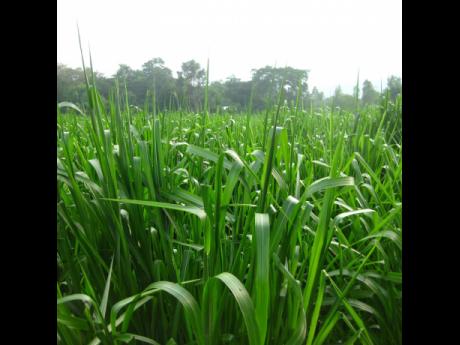JDDB looks to ease Trelawny farmers’ Mombasa grass concerns
WESTERN BUREAU:
The Jamaica Dairy Development Board (JDDB) is on a path to encourage cattle farmers to plant a special species of grass to enhance Jamaica’s food security, but a couple farmers in Trelawny are not too encouraged as they have not been able to reap the benefits of this product that is thought to offer special qualities.
Cattle farmers David Robb and David James, who were encouraged to plant the Mombasa species, told The Gleaner that their efforts to plant the grass has been a failure and they have lost monies invested.
“I ploughed three acres of land at $30,000 per acre,” said James. “Representatives from Jamaica Dairy Development Board came and planted the grass but there was very little growth, resulting in the loss of money and effort.”
The sentiments were not much different for Robb, who stated matter of factly his disappointment and readiness to tackle another endeavour.
“I planted two acres and got nothing in return,” Robb shared. “I am very disappointed, but life goes on.”
Devon Sayers, the project coordinator at JDDB, expressed surprise at the experience of the farmers. According to him, Mombasa is one of the best species of grass and they are encouraging farmers to plant it.
“It is from the panicum species and has a nutritive value which ranges from 12 to 17 per cent crude protein. This makes it an excellent source of animal feed,” Sayers informed.
The JDDB’s project to plant Mombasa has been ongoing and reaped success in other parts of the country, which led to cattle farmers who are involved in the cultivation of the grass, both large and small, singing the praises in Clarendon and St Elizabeth.
A 42-acre area for demonstrative purposes is established at the Ministry of Agriculture’s Bodles Research Station Centre in Old Harbour, St Catherine, where information is readily available to farmers.
BEST PRACTICES
“Here farmers are encouraged to come to the centre and learn about the grass and best practices for its cultivation,” Sayers noted.
In fact, one Trelawny cattle farmer, Kitson Chin, has been to Bodles to observe and learn, and his interest has been piqued to get involved in cultivating the Mombasa grass.
“I was encouraged by what I saw. I am in negotiations to have JDDB come to my farm and plant at least two acres,” Chin said expectantly.
In the meantime, Sayers has pledged to visit the farms of both Robb and James in a bid to ascertain their problems.
“I will go there and investigate on the best practices used by these farmers. For one, there are best times of the year to plant Mombasa,” Sayers observed.
“I will be involved with them and others so that the planting of the grass can be a success to the farmers,” he pledged.
The reason why he is going to such lengths is because of the additional qualities of the grass, which he believes will do wonders in boosting animal farming.
“The Mombasa replenishes itself quickly. It is very highly drought resistant and is good for farmers, including those who rear small ruminate,” Sayers explained. “It can be easily converted to hay. A prolific cultivation of this grass reduces the need for the import of animal feed.”

